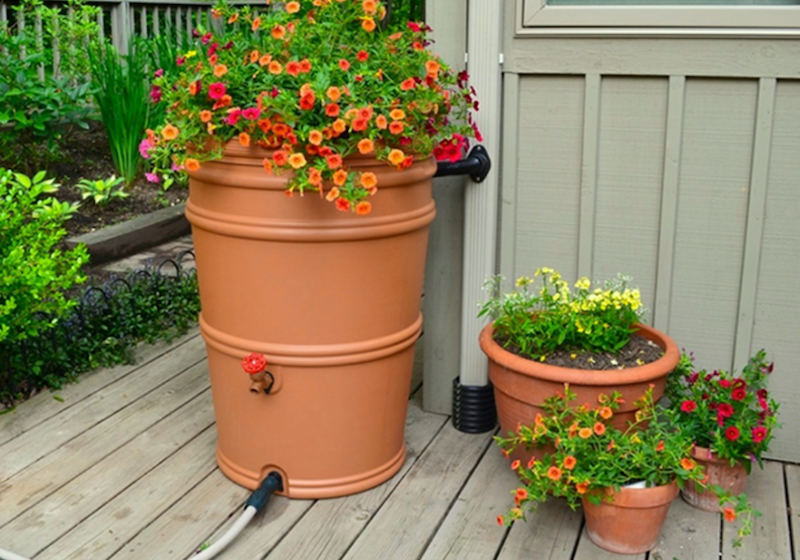Before the first freeze of the season, follow this simple advice to prevent your rain barrel from turning into a giant ice cube and to keep it low-maintenance year round.
Rain barrels have become increasingly popular in helping to conserve water use in the garden. They usually require very little care, but a few season-ending tasks will protect your investment.
Throughout the growing season, rain barrels tend to collect organic materials such as leaves, tree pollen and other materials. Regular cleaning to remove debris will extend the life of the barrel and prevent clogging. This time of year the screens should be removed and cleaned, and hoses should be checked for leaks and clogs. Check that the overflow value is not clogged, as this prevents the barrel from overflowing and discharging water next to the foundation. This will save headaches later.
Rain barrels also should be checked for sediment in the bottom of the barrel. If a large amount of debris has found its way into the barrel, turn the barrel over and wash out the deposits.
What about winter freezing? The most common recommendation is to empty the rain barrel before freezing weather and unhook it from the downspout. Depending on the construction and type of barrel used, some can freeze and rupture with freezing and thawing. Some barrels are made from extremely heavy plastic that can tolerate the freezing water. When in doubt, it is best to empty the barrel before it freezes. The barrel can simply be turned upside down for the winter, or brought indoors for winter care.
The other option is to open the valves and let the water flow through the rain barrel and be discharged into the yard. This will prevent the accumulation of water and pressure placed on the container when water freezes and expands.
Rain barrels are a great way to save a few gallons of water. Protect your investment during winter.
Story: Dennis Patton, Horticulture Agent, Johnson County K-State Research and Extension

hi Dennis- do you know if folks also empty the giant multi-hundred gallon totes for winter? i’m sure they would take a long snap to freeze solid, but also seems wasteful to just dump what’s been accumulated during warmer days. what do you think?
Excellent question. I think the answer all depends on our weather patterns which are unpredictable. I would also err on the side of safe than sorry. My take would be if you did not empty, at least remove enough water to allow for the expansion of the tote during the freezing weather patterns. It is the expanding of the water which creates the pressure and could break. On the other hand one spring rain would quickly fill a tote. I know this is not a solid answer but I would have concerns if we experienced another February like last year. Being elevated, not protected from weather extremes I would be concerned. Dennis